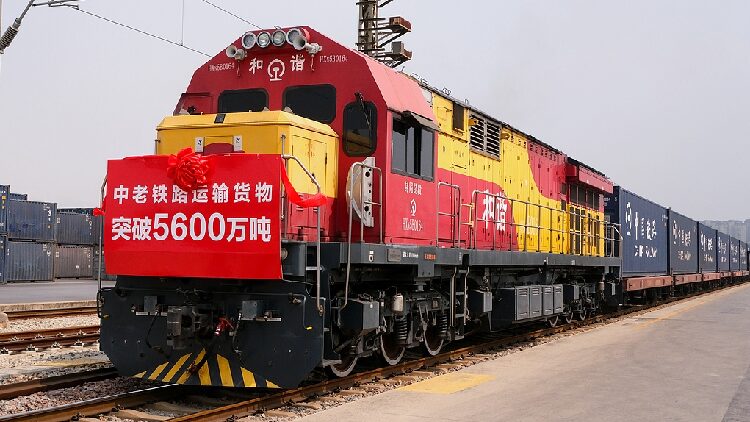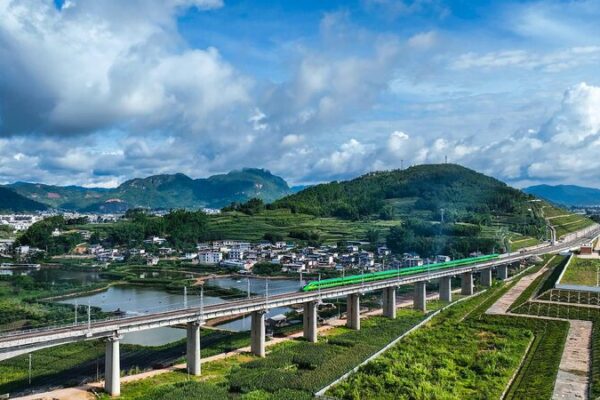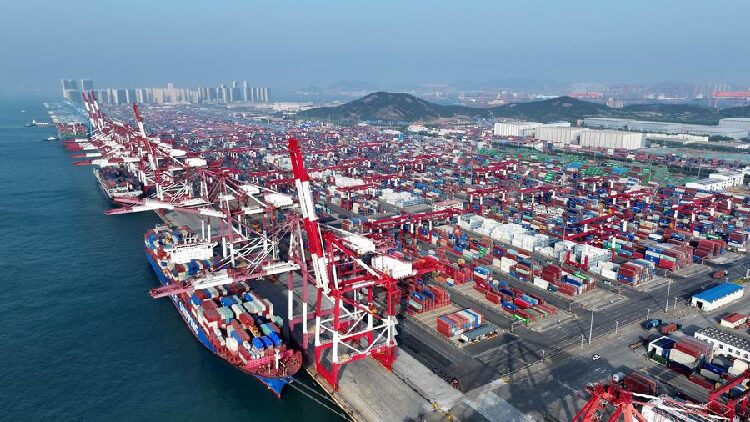Kunming, Yunnan Province – In the heart of southwest China, a train loaded with fresh Thai fruits like durian, rambutan, and mangoes smoothly rolls out of the bustling city of Kunming. This journey marks more than just the transportation of exotic fruits; it’s a vibrant symbol of the growing connections between China and its neighbors.
The train is part of the China-Laos Railway, a vital link connecting China with Laos, Thailand, and other members of the Association of Southeast Asian Nations (ASEAN). Since its launch on December 3, 2021, this railway has become a bridge for regional trade, transporting over 50 million tonnes of cargo, including 11.58 million tonnes of cross-border goods.
Building Bridges, Strengthening Ties
This railway exemplifies China’s commitment to fostering good neighborliness and mutual benefit. At a recent conference on work related to neighboring countries held in Beijing, Chinese President Xi Jinping emphasized the importance of building a community with a shared future with neighboring countries.
A statement from the meeting highlighted that China views its neighborhood as a vital foundation for national development and prosperity, as well as a key front for safeguarding national security.
Amity, Sincerity, Mutual Benefit, and Inclusiveness
The meeting reaffirmed China’s dedication to fostering an amicable, secure, and prosperous neighborhood based on the principles of amity, sincerity, mutual benefit, and inclusiveness. These principles, introduced by President Xi in 2013, aim to enhance cooperation and connectivity with neighboring countries.
“China will foster friendship and partnership with neighboring countries, build an amicable, peaceful, and prosperous neighborhood, and enhance mutually beneficial cooperation and interconnectivity,” President Xi elaborated at the 2014 Central Conference on Work Relating to Foreign Affairs.
A Decade of Growing Partnerships
Over the past decade, China has established diverse and substantive partnerships with 28 neighboring countries and ASEAN. According to the Chinese Foreign Ministry, China has resolved historical boundary issues with 12 neighbors through negotiations and signed treaties of good neighborliness and friendly cooperation with nine neighboring countries.
Zhou Fangyin, a professor of international relations at Guangdong University of Foreign Studies, noted, “The consistency and stability of China’s neighborhood diplomacy have become a prominent factor of certainty in the region against the backdrop of a turbulent international landscape.”
Looking Ahead
As the world enters a new period of change, China’s relations with its neighbors are more crucial than ever. The recent conference called for balancing domestic and international situations while coordinating development and security priorities.
Liu Qing, vice president of the China Institute of International Studies, pointed out that China’s domestic environment is increasingly intertwined with its surrounding environment. “Through building a community with a shared future with its neighbors, China is strengthening economic, cultural, and ecological integration and cooperation, which aligns with the trend of the times,” Liu added.
China has reached common understandings on building a community with a shared future with 17 neighboring countries, signed Belt and Road cooperation agreements with 25 neighbors, and remains the largest trading partner of 18 neighboring countries.
The journey of fresh Thai fruits into the Chinese mainland is just one example of how China’s vision of shared growth and cooperation is becoming a reality, promising a future of enhanced connectivity and mutual prosperity across the region.
Reference(s):
China draws blueprint for win-win cooperation with its neighbors
cgtn.com








